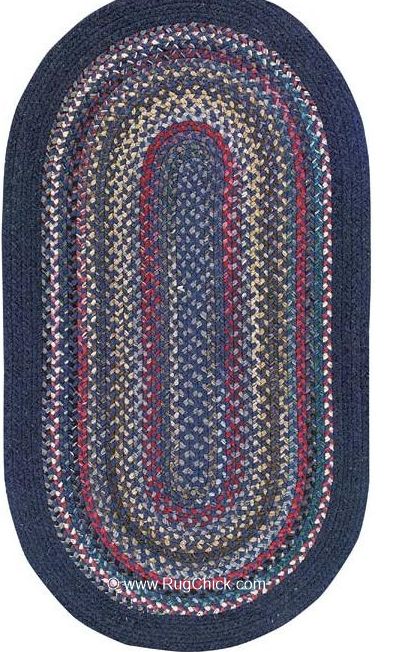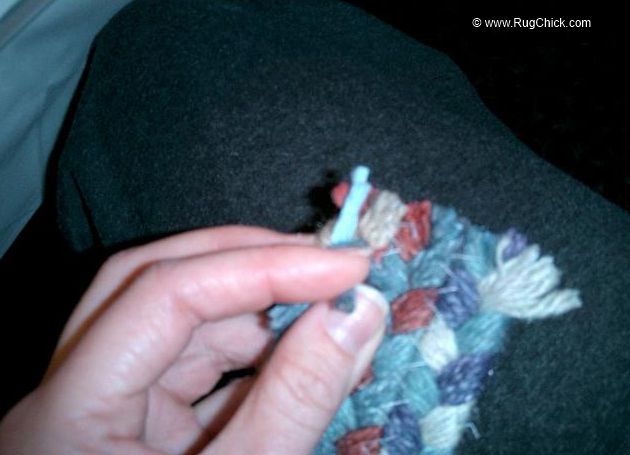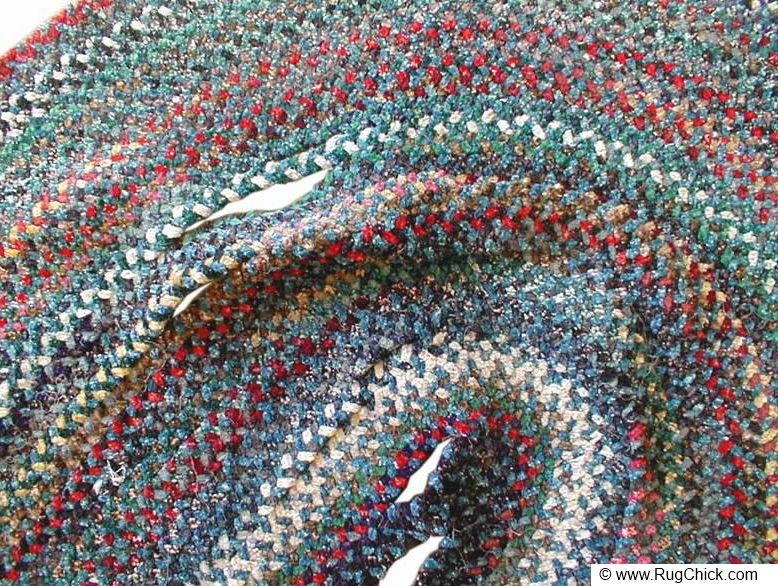Braided Rugs – What To Watch For
I’ve seen braided rugs come in all colors, sizes, and ages. New product from stores like Pier One, and some from the 1930’s with a story from the owner about how their neighborhood tore clothing into strips to create a community rug when she was a child.
These rugs are braided. Fabric strips braided into long braids, and then crafted into a rug like this one:

Braided rug from America
Many are very sturdy rugs, but some of the older ones can pose some problems for both rug owners and rug cleaners. Here are a few items to check for:
Rug dye problems. You want to test the dyes of your rug to see if they are not colorfast. If you own the rug and a damp cloth shows dye transfer, then you will want to be careful what type of surface you place the rug on top of as dye may transfer onto other surfaces. If you are nervous about a vibrant braided rug being on top of light colored wall-to-wall carpeting, then use a pad underneath as a barrier between the rug and the carpeting. (Rugs are meant to be placed on HARD surfaces, so this is only if you have no choice but placing it over a soft flooring.)
If you are a rug cleaner, and the dyes are highly fugitive, then instead of giving the rug a proper wash, you will be forced to lessen the amount of water during the cleaning and treat the rug as you would tricky upholstery and use a tool such as the Drimaster tool to clean, rinse, and immediately extract the cleaning solutions.
Rug braid filler threads. Sometimes the inside of the braids are supported with filler materials to make the braids more stiff. These filler materials, if they are dyed, may create “bleeding” problems when wet. You will want to open up the braids a bit and see of this filler material exists. This is a blurred photo – but this is what the filler material can look like:

Cut braid with filler material inside
Broken braids. With especially older braided rugs, the thread holding the braids along side of one another can weaken and break. This ends up making the rug fall apart. If you own the rug, tripping on broken areas can make the problem worse, and if the rug is given a bath, moving the rug around can create more and more broken areas.

Braided rug coming unraveled.
The problem of broken connecting threads needs to be addressed BEFORE the cleaning process as it will become worse. If the rug is heavily soiled however, hand sewing the braids together will not be possible (it’s unsanitary to the rug repair specialists to be handling and breathing in the contaminants in a heavily soiled rug).
In this case, you can sandwich the rug between two plastic screens, sew these screens to one another to press the rug tightly inside of them, and then soak the rug, scrub, and rinse the rug as that “braided rug sandwich.” Then after complete drying it can be repaired.
When you send a braided rug off for repair, be sure to make sure they use very strong upholstery thread for those connecting threads so that you do not have to have the rug repaired yet again in a few more years.
These are colorful and fun rugs – and the older ones have some great stories attached to them. Just be sure to inspect them very carefully before cleaning so that you do not create any unexpected problems.
– Lisa
